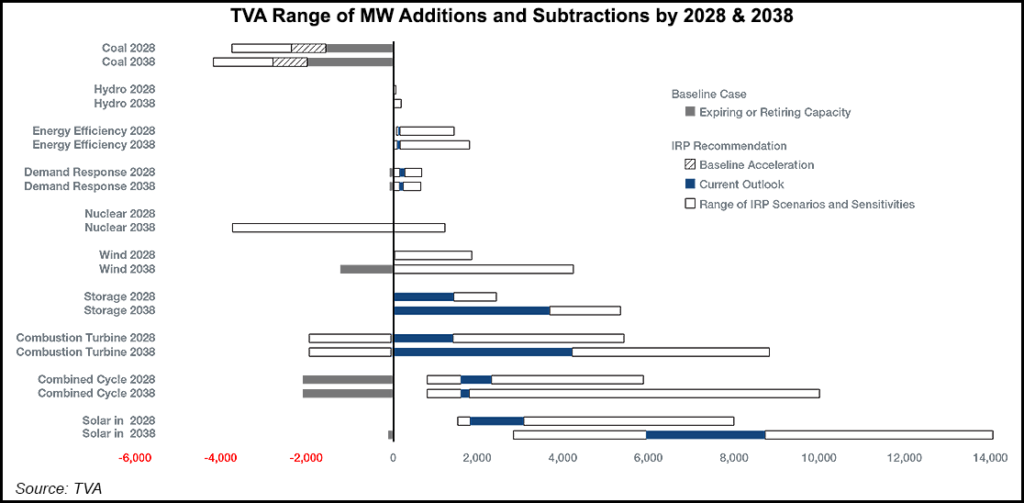NGI The Weekly Gas Market Report | Infrastructure | NGI All News Access
TVA’s IRP Foresees Natural Gas Growth Climbing 2-17 GW Over Next 20 Years
The Tennessee Valley Authority (TVA) said its latest integrated resource plan (IRP) calls for adding 2-17 GW of natural gas power and more renewables growth, as the region’s generation needs increase slightly over the next two decades.

The IRP and associated environmental impact plan estimate generation growth of 0.1% from 2018-2038. Energy growth could see 2% annual growth rate at its highest scenario, while at the lowest annual growth rate, the model shows a minus 1.5% reduction in growth for the next 20 years.
“The 2019 IRP emphasizes the importance of flexibility in our generation in response to the changing energy marketplace,” said TVA’s Laura Campbell, vice president of enterprise planning. “TVA looked at a wide range of possible futures, and flexibility is important in every case to ensure a reliable power supply.”
Under development since February 2018, TVA has updated its 2015 IRP because of the continuing dramatic changes underway in the utility industry. The updates from 2015 resemble those from 2011. Such changes include abundant, lower-cost natural gas, decreased costs for renewable generation and an increased focus on energy conservation efforts.
TVA’s current outlook for gas combined-cycle generation is an addition of 800-5,700 MW by 2028 and up to 9,800 MW by 2038 in the high-growth scenario.
TVA’s results from the IRP study showed solar expansion plays a substantial role in every scenario, with current projections showing up to 14 GW of solar additions over the next 20 years. Results also show wind could play a role.
The TVA said additional coal retirements occur in some scenarios, but it does not project baseload resources will be added in the next two decades.
© 2024 Natural Gas Intelligence. All rights reserved.
ISSN © 1532-1231 | ISSN © 2577-9877 | ISSN © 1532-1266 |
